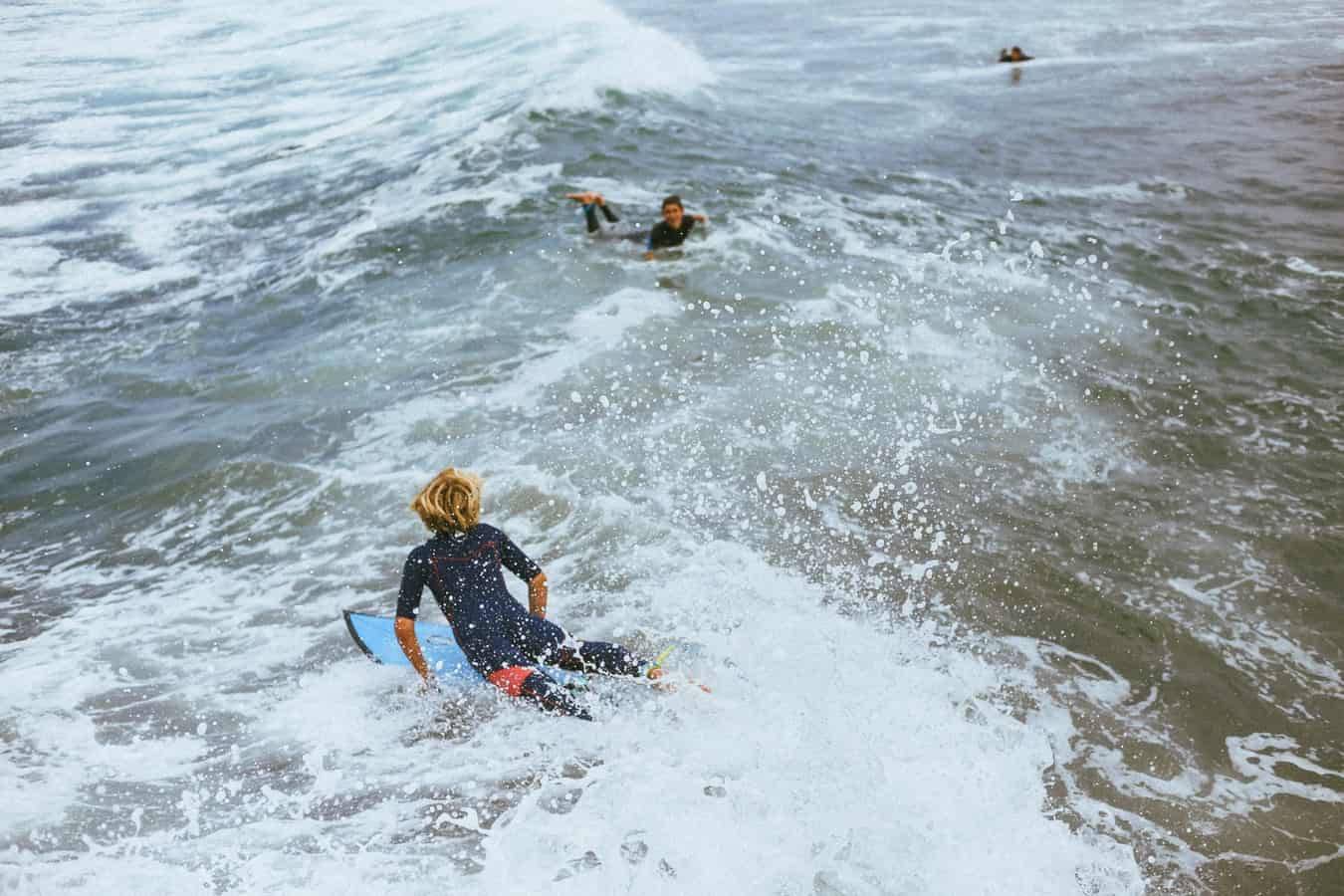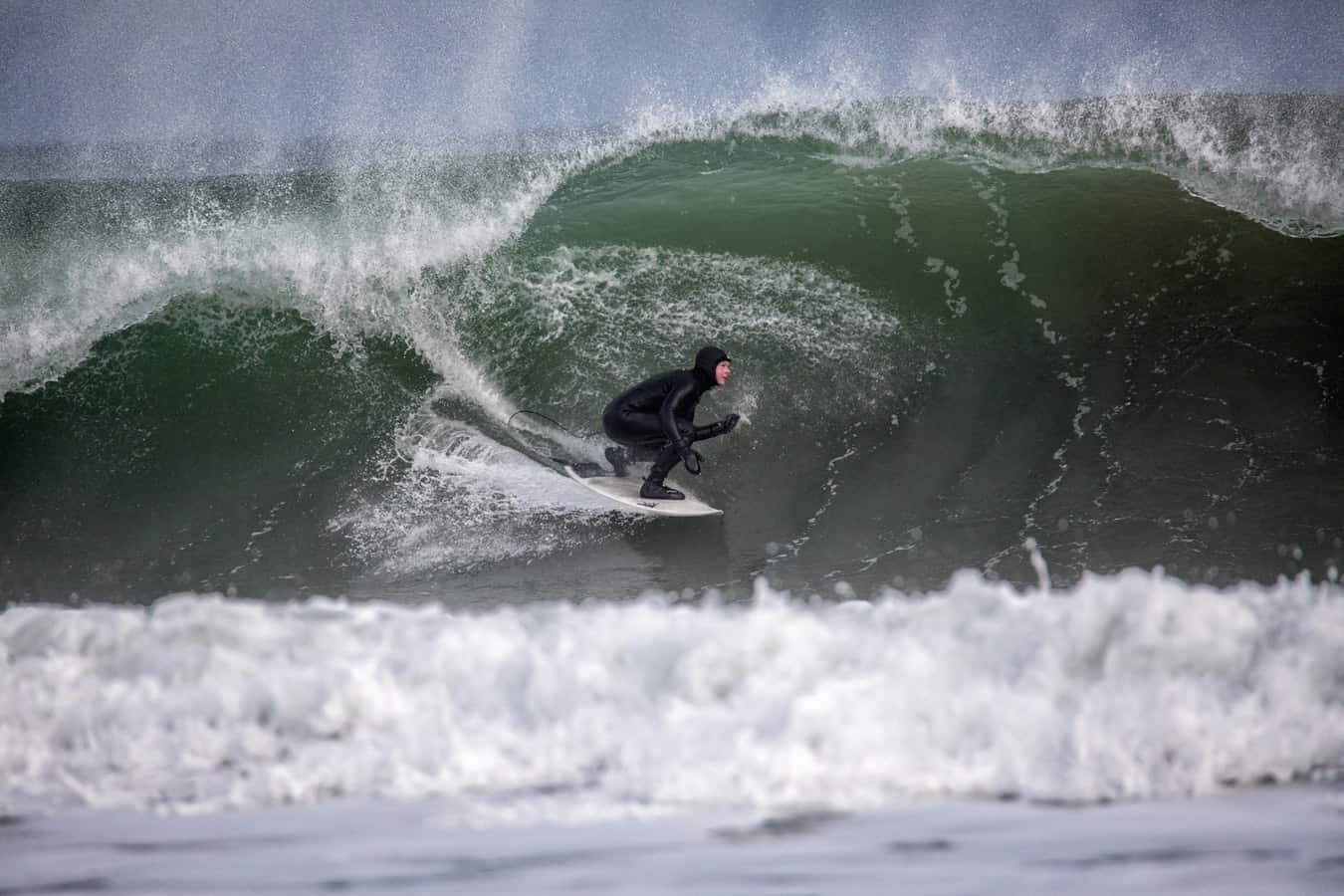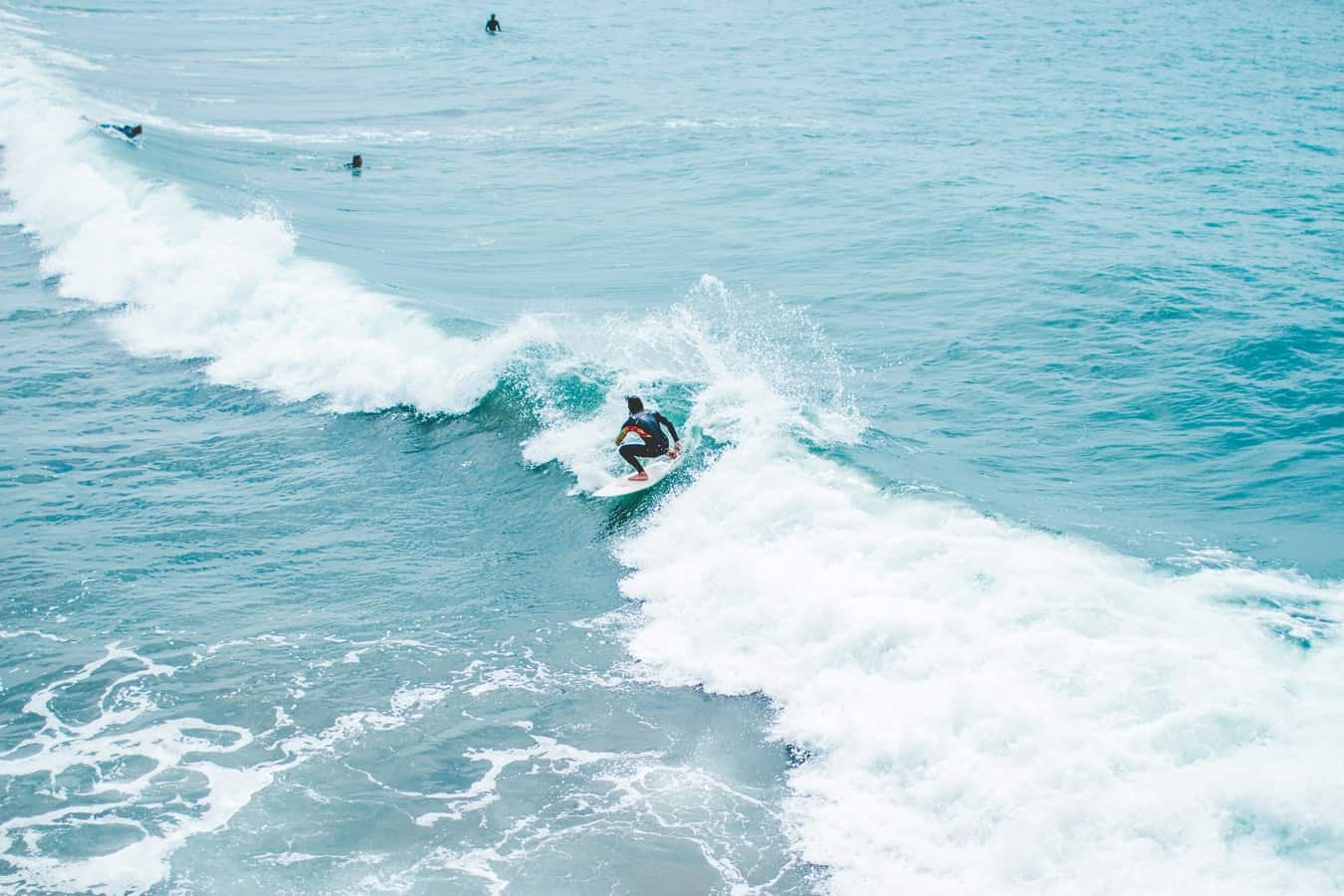Injuries that take you out of your favorite activities can be tough. All physical activities come with risk, and although surfing is less risky than traditional contact sports like football, it still requires physical health and fitness.
The knees are an often overlooked but often injured area of the body that takes time to heal properly which can take you out of the water for a while.
In the case of knee surgery like the ACL, how long do you have to wait until you can get out on the waves again? You can typically return to surfing anywhere from four months to a full year after ACL surgery with proper care and safety.
If you need ACL surgery, it can take anywhere from four months to a full year of recovery to be strong enough to surf again.
ACL surgery is the surgical replacement or reconstruction of the anterior cruciate ligament (ACL) in the knee.
The ACL is one type of ligament in the knee joint. It’s a band of fibrous, connective tissue that helps join the thigh bone, patella and shin bone. Injury to the ACL is fairly common, especially in athletes.
Not every ACL injury requires surgery, but when it does the two most common types are allograft and autograft reconstructions. These entail using connective tissue or tendons from a cadaver or from somewhere else in your body respectively and both have their pros and cons.
Recovery time for returning to sports, especially one like surfing that requires great use of the knees, is dependent on a few factors. Namely, the level of surgery required, the age and overall health of the recipient, and physical therapy.
The ACL may need partial or full reconstruction, in the case of a full reconstruction, it may take longer to heal post surgery.
In the same respect, age and health play a major factor in the healing process. In general, younger or more active people will recover more quickly from surgery. Older or inactive people will take longer to fully heal.
Physical therapy also plays a role. Physical therapy will help to build strength in the new tendon. Following the suggestions of your physical therapist will help in the recovery process. Of course, it’s best to listen to your doctors and go by when they say you’re ready to get back to surfing.
A year can seem like an exorbitant amount of time to get back in the water, but in the long run, the healthier your knee becomes, the better surfing you’ll enjoy.
Other Knee Injuries and Causes in Surfing
You may not fully realize it, but your knee plays a major role in surfing. The knee helps to stabilize the body in conjunction with the hips and ankles.
There are several tendons and ligaments that make up the knee joint and hurting the ACL is only one type of knee injury.
You can also injure the MCL, meniscus, have multiple ligament injuries, patellofemoral pain (overuse from squatting and hard turns) or even Saphenous Neuritis (numbness on the inside of the lower leg from pinching the nerve while straddling a surfboard).

Clearly, there are many possible types of knee injury in addition to the ACL. These ligaments and tendons work together with the hips, core, and ankles to stabilize the body.
When any one of these are weak or the surrounding muscles aren’t properly engaged, there is risk of injury. When it comes to surfing, there are several causes of knee pain or knee injury, with multiple factors.
First and foremost is repetition. Repetitive motions over time will eventually cause injury. Things like popping up on your board and paddling are examples of repetitive motions.
There isn’t a way to prevent these motions, but stretching and strengthening the right muscles groups will help.
After repetitive motions, jumping and turning are common sources of knee pain in general, and crop up frequently in surfing. In order to turn, twist, and move on your board, requires use of the stabilizers in your knees.
Those tricks and turns are key causes of knee injury, often due to poor form. Awareness and engagement of other stabilizer muscles will help keep pressure off the knees.
Lastly, knee injury can be caused by weakness or imbalance in another part of your body, namely the ankles, hips and core.
Even if you have strong knees, if these other parts of the body aren’t up to par, you may still risk injuring the knee as it tries to make up for this imbalance. Luckily there are steps you can take to protect your knees.
Strengthening Exercises
Part of good surfing technique has as much to do with what you do out of the water as it does in the water.
Awareness of your body on the water in conjunction with strengthening exercises out of the water will go a long way to protecting not just your knees, but your body as a whole from possible injury.
It goes without saying, these exercises are a suggestion for people without existing knee injury or tears. If you have existing injuries, consult your doctor or physical therapist for proper steps.
For those with otherwise healthy joints, these exercises will help strengthen stabilizing muscles to prevent injury to the knees and other joints.
Step Ups
- Use a stool or platform around 6 – 12 inches high depending on existing strength and ability
- Position yourself parallel with the platform, left side facing in
- Place your left foot on the platform
- Step up using the left foot, stabilizing through the leg to maintain balance
- Raise right knee level with hips
- Slowly lower right foot back down to the ground
- Repeat 10 – 15 times and switch sides, leading with opposite foot
This exercise will help to strengthen the hip flexors, quads and gluteal muscles while working on balance
Wall Squats
- Stand with your head, back, legs and feet against a wall
- Move your feet approximately 2 feet in front of you, hip width apart, with the rest of the body still against the wall
- Slowly lower yourself down back flush with the wall for support until the legs are bent at or close to 90 degrees.
- Be sure knees are directly above the ankle, never forward as this can cause injury
- Hold for five to ten seconds
- Slowly raise up
- Repeat for ten to fifteen reps
This exercise will work the quads and glutes while keeping pressure off the low back and strengthening the knee.
Hamstring Sliders
- Begin sitting with legs bent and in front of you
- Place a floor slider (or makeshift slider) underneath the heels
- With hands behind you for support and feet hip width apart, slowly extend legs until straight or as close to straight as you can handle
- Once you reach extension, slowly pull legs back in to starting position
- Repeat for ten to fifteen reps
This exercise strengthens the hamstrings, calves and glutes along with the abdominals.
Single Leg ¼ Squat
- Begin standing with feet hip width apart
- Lift right leg, knee level with hip, weight in left leg
- Slowly bend left leg a quarter of the way down or as far as you can safely bend while keeping the knee over the ankle
- Slowly raise back up
- Repeat for ten to fifteen reps and switch sides
This exercise works on balance through the ankles and lower legs while also strengthening the quads and working the muscles around the knee.
Plank
- Position yourself facedown in pushup position
- Hands and arms directly below shoulders, legs in straight line, head and neck in line with spine, eyes slightly in front of you and abdominals pulled in to support low back
- Hold position ten to thirty seconds, or as long as you can
- Repeat
This is a full body exercise that focuses on the core and hips. It works on strengthening the abdominals, hip flexors and glutes.

Stretching Exercises
In addition to strengthening exercises, there are other aspects to preventing knee injury. One of the biggest is introducing stretches to your exercise and surfing routines.
Stretching the muscles before and after they’ve been worked helps to keep them flexible and elastic and prevents the muscles from getting too tight. Loose and flexible muscles are able to move and do their job better than tight muscles.
This translates to a reduced risk of injury. You should always do a full body stretch before and after surfing or other exercise, but especially focus on areas of risk, like the lower body joints.
Quadriceps Stretch
- Stand with feet hip width apart, body facing forward
- Bend left leg, bringing your foot towards the glutes
- Hold your foot in place
- Hold for ten to fifteen seconds
- Return to start and repeat on opposite leg
You should feel the stretch through the hip flexors and quad muscles
Hamstring Stretch
- Stand with feet hip width apart, body facing forward
- Hinge forward from the hips
- Bend towards the ground as far as you can go, keeping the legs slightly bent
- When you’ve bent as far as you can comfortably go, hold position for ten to fifteen seconds
- Return to start
This stretch should be felt in the hamstrings, back of the legs and lower back.
Hip Stretch
- Start laying on your back
- Bend both legs and draw them up perpendicular to the body
- With knees bent, place the right foot across the left thigh, above the knee, creating a sort of triangular shape
- Bring hands together on left shin, below the knee
- Gently pull left leg towards your chest until you feel a stretch in the right hip
- Hold for ten to fifteen seconds
- Switch sides
This exercise will relieve tension from the hip joints as well as the lower back.
Related Questions
Is Surfing Bad for Your Knees?
Just like any physical activity, there are certain risks in surfing.
Surfing isn’t inherently bad for the knees, but it can cause knee injury if you aren’t aware of your form and technique. Surfing requires use of the knee joints and with that, proper care to prevent possible injury.
Can You Surf After a Total Knee Replacement?
After complete recovery, you should be able to return to surfing after a total knee replacement.
Just like with any other knee injury, it will take time and physical therapy to get back to surfing. Always wait for the ok from your doctor to prevent reinjuring your knee.

